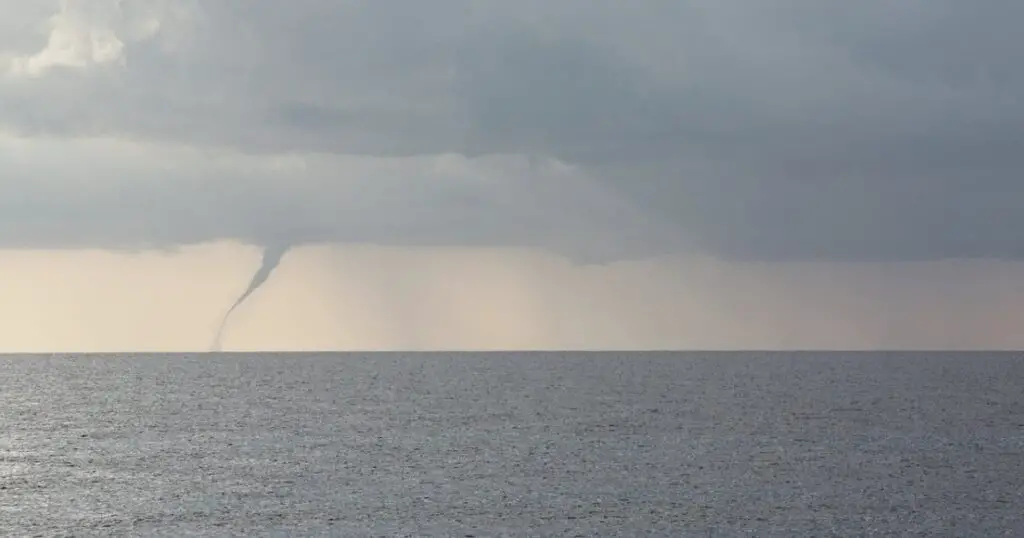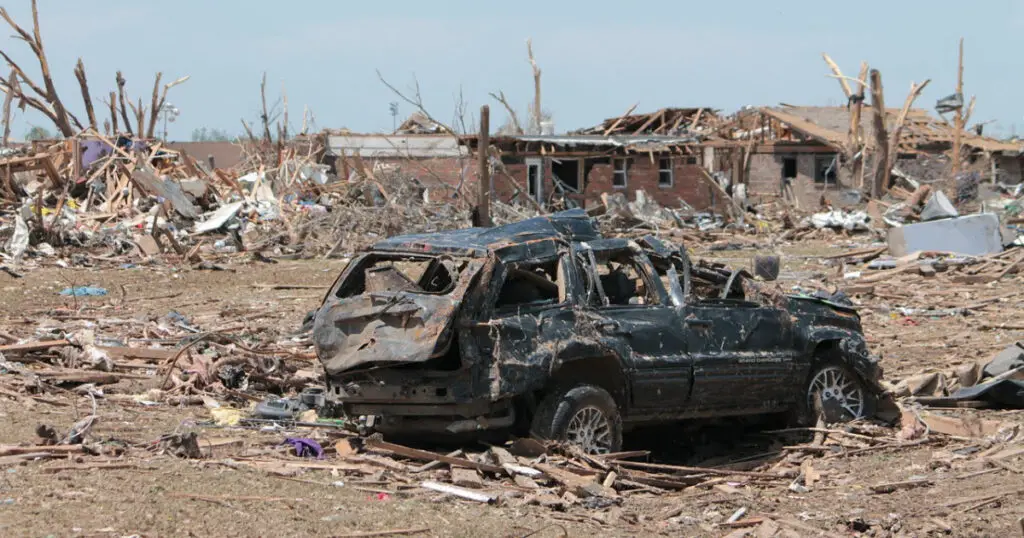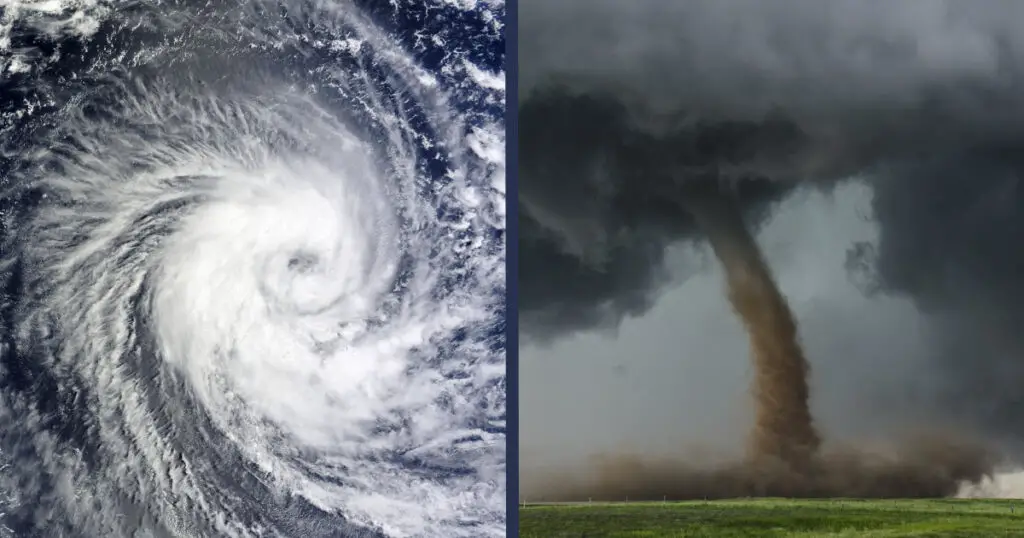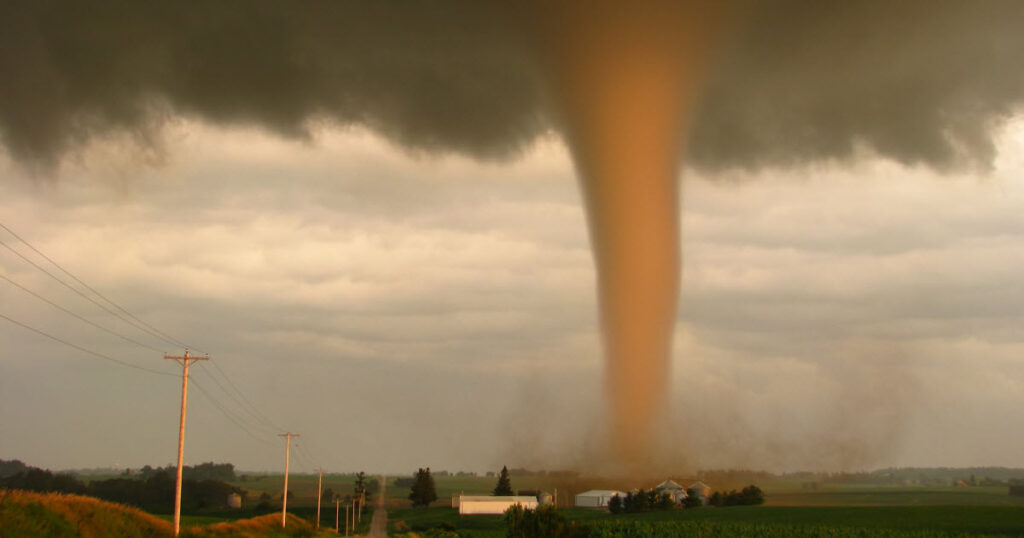The following interesting facts about tornadoes were specifically chosen for kids to ensure a much better understanding of this type of storm. Many kids love to learn about storms and weather, and a tornado is an inherently beautiful and interesting meteorological phenomenon that is sure to fascinate your little ones.
We’ve hand-selected these facts that we think your kids will find interesting.
Some of our Favorite Tornado Facts for Kids
We’ve grouped these tornado facts for kids into 4 categories so you can jump to the topic that you think your little ones will be most interested in. These include:
Tornado History and Basic Facts
Where does the word “tornado” come from?
The word “tornado” comes from the Spanish word ‘‘tronar’’ which means “to thunder” in English. Over the years, and with probably some spelling mistakes along the way, the noun “tornado” was born.
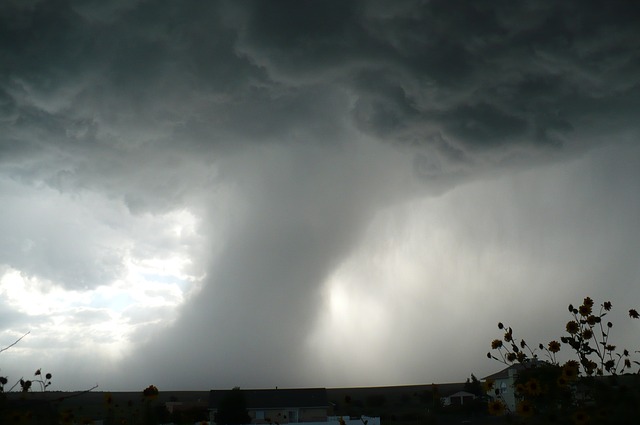
On which continents do tornadoes occur?
Six (6) out of the seven (7) continents on earth have experienced tornadoes at one point or the other. The only continent that was never affected by a tornado is Antarctica.
In which US state do the most tornadoes occur?
In the United States, Texas is one of the states which recorded the highest number of tornadoes. It experiences 126 on average every year. After that, Oklahoma experiences an average of 52 tornadoes every year. Overall, the United States experiences over 1200 tornadoes annually – a much higher number that any country worldwide.
Where did the fist tornado ever occur?
The first tornado ever recorded took place on July 5, 1643 in Massachusetts Bay which would later become a part of the United States of America.
What was the most destructive tornado ever?
The most destructive tornado occurred in the year 2011 in the United States of America. A total of 360 tornadoes raged in 21 states in the Southern, Midwestern, and Northeastern US. After 3 days, the total property damage after 72 hours was $10.8 billion.
| Related Posts |
|---|
What was the deadliest tornado ever?
Although the most destructive tornado has taken place in the US, it wasn’t the most fatal. The tornado with the most fatalities worldwide occurred in Bangladesh in the year 1989, killing over 1,300 people.
Tornado Appearance and Behavior
Are tornadoes always grey?
No, every tornado has a different color. This is due to he color of the water, the earth and the rubble that the wind whips up and brings with it as it spins.
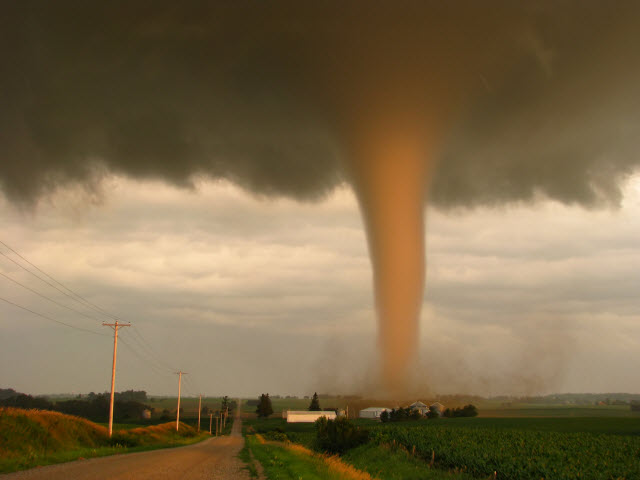
Every tornado is unique and will have different coloration based upon the environment in which it exists. Light also plays a role, as the color, angle, and quantity of light reflecting off of the debris inside a tornado will make the tornado look unique.
Do tornadoes only occur on land?
In distinction to hurricanes, tornadoes form over land. Yet, the can sometimes form over water, or move from land to water. In this case they are referred to as “tornadic waterspouts” with the same characteristics as a land tornado (thunderstorms, lightning, strong winds).
Do tornadoes rotate clockwise?
Tornadoes can differ in terms of their rotation. For instance, those that occur in the southern hemisphere have been discovered to rotate clockwise. Conversely, the ones which occur in the northern hemisphere are characterized by an anti-clockwise rotation.
What happens on the inside of the tornado?
In the eye of the storm, it is probably very calm and there is a downward pull. But these are just guesses. It cannot be said with certainty since scientific measurement equipment is destroyed before it can reach the eye of the tornado.
How long does a tornado last?
Tornadoes do vary in terms of how long they last before dissipating. For instance, there are some that will last for only a few minutes while others can rage for up to 1 hour. The average is about five minutes.
The Power of Tornadoes
How strong is a tornado?
Tornadoes vary in strength with wind speeds between 40-320mph. With the help of the Enhanced Fujita Scale and regular Fujita Scale, every tornado is categorized on a scale from 1-5.
Wind traveling 320mph sounds scary, what happens to a person in that kind of storm?
The NASA ran an experiment in 1964 to explore how wind affects people. The good news: our body can resist winds at 357mph – stronger than the winds of a tornado. But it is not a pleasant experience.
For some context you can see an AP reporter in a wind tunnel experiencing winds of 100 MPH here:
If he can barely handle winds above 100MPH in this controlled environment, you can imagine how scary and dangerous it would be to be in an F5 tornado with winds in excess of 300 MPH.
Can you protect yourself from a tornado?
There is a number of places where one can take cover during the occurrence of a tornado. These include basements, (public) storm shelters or storm cellars.
Can I escape a tornado by car?
If you drive fast enough, you could have a chance to overtake a tornado when it remains stationary in one place. However, once it moves, it can reach up to 320mph – in this case you wouldn’t stand a chance to escape.
Cool Science
Would it be possible to produce electricity with a tornado?
The Frenchman Luis Michaud is working on the idea to generate electricity from tornadoes. In a tower he wants to let warm air flow and then use the cooler outside temperature to form a tornado of over 40 meters. The tornado will then activate a turbine on the ground and generate electricity.
